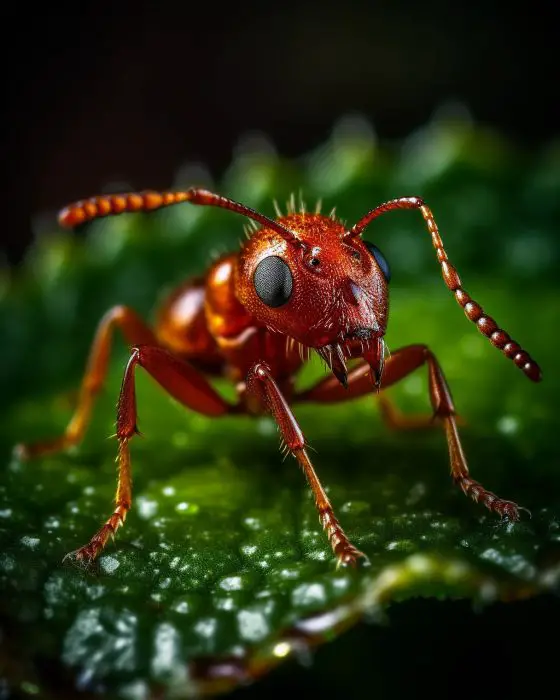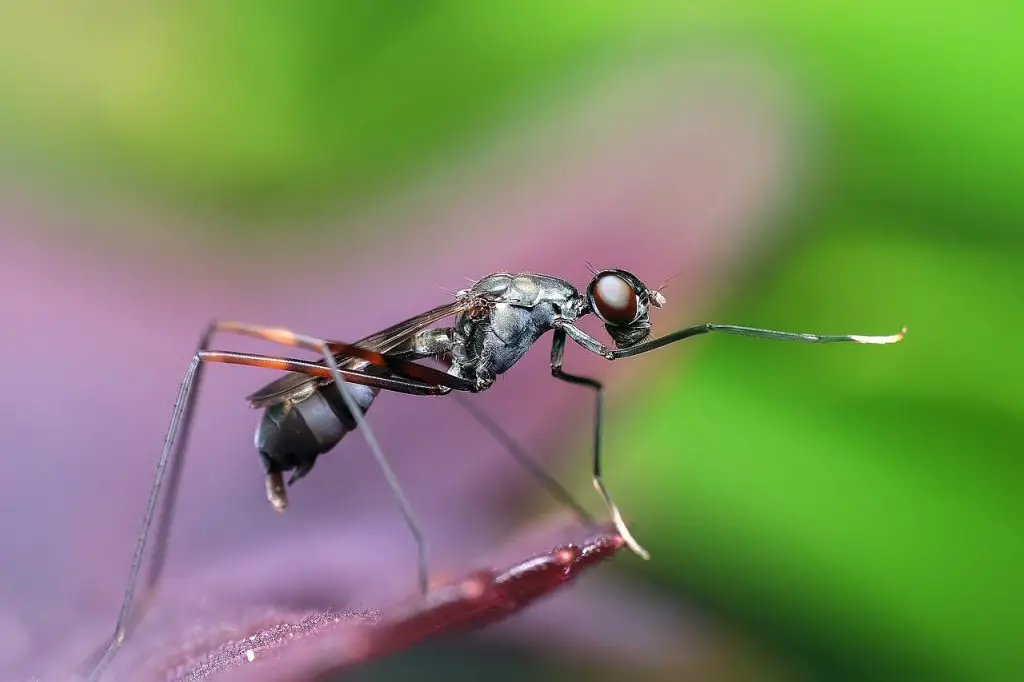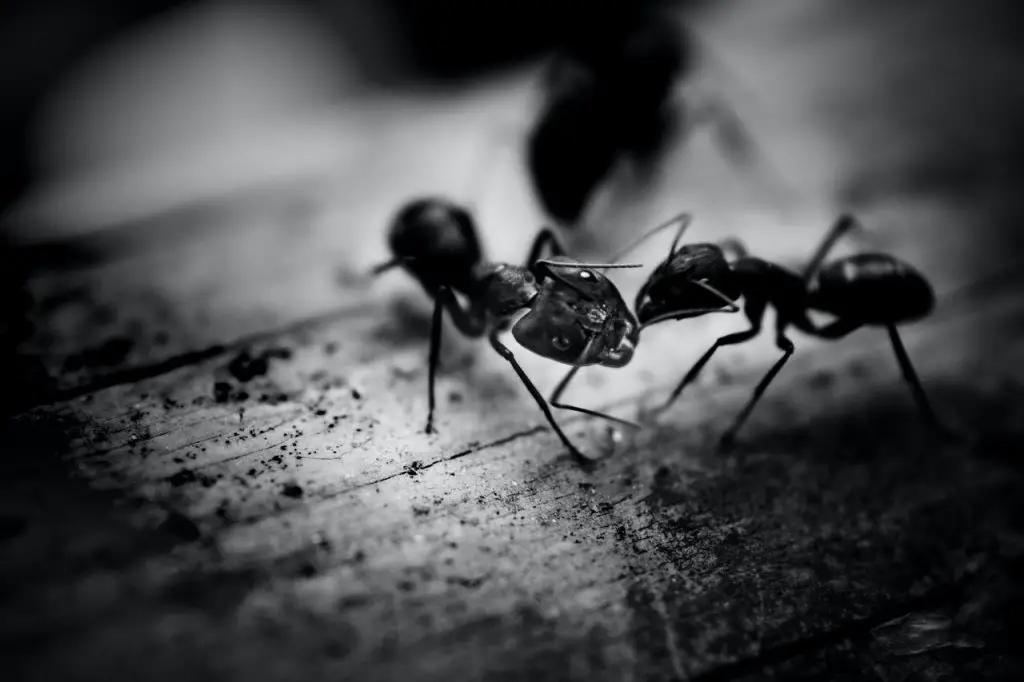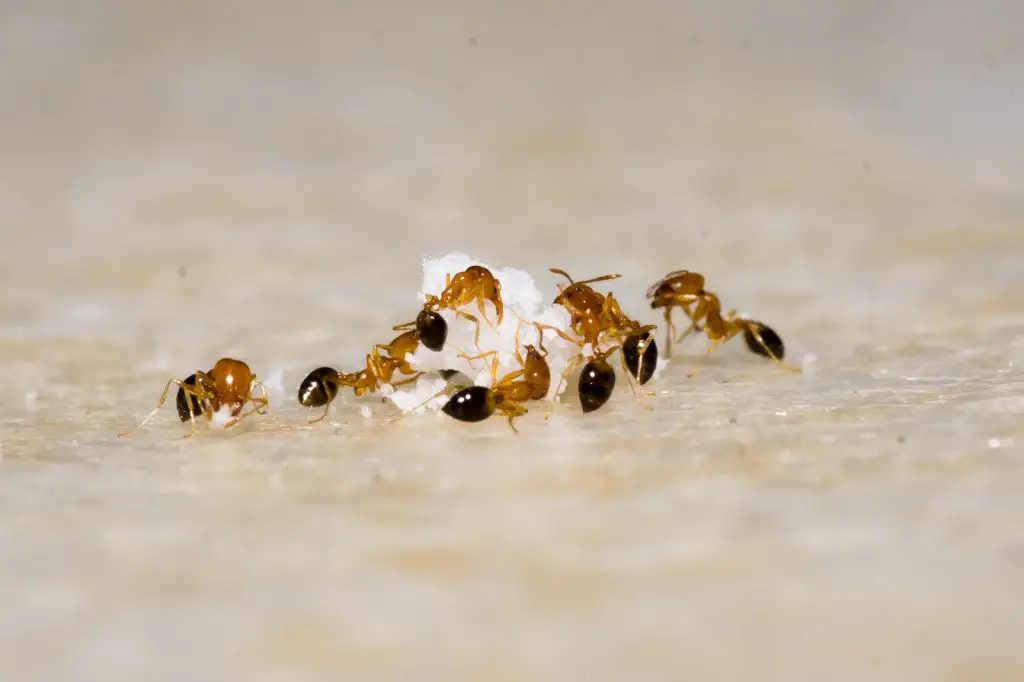An ant has three pairs of legs, meaning six legs in total. Two front legs, two in the middle, and two in the back on each side of these creatures’ bodies.
The legs are categorized into three groups: stilts with elongated legs, normal unmodified legs with limited tarsus movement, and stumps with shortened legs.
Despite their small size, ants are incredibly industrious creatures with an impressive work ethic and body structure that allows them to accomplish remarkable feats.
How many legs does an ant have?
Ants, being insects, have six legs arranged in three pairs that are attached to their thorax. The legs are composed of different segments, including the tarsus, tibia, and femur.
These many joints allow the ants to have very good movability in their legs.
Ants utilize their mandibles to hold and transport objects, as well as to bite and cut.
The thorax is where the six legs of an ant are attached, while the abdomen houses its crucial organs and reproductive structures, also known as the gaster.
Advantages of ants legs
Ants can run very fast with their legs designed for running. Each leg ends with a hooked claw that helps them climb and hold onto things. The gaster holds the ant’s heart, digestive system, and chemical weaponry. Ants also have a sting to inject venom into enemies.
Ants are incredibly valuable insects as they perform various essential tasks.
They are excellent diggers that help turn over and aerate the soil through their intricate tunnel systems, which allow better water penetration.
Moreover, ants also help in seed dispersal by collecting and transporting the seeds of various native plants back to their nests.
Uncovering Ant Secrets: The Truth About Their Six-Legged Wonders
Ants and spiders both belong to the arthropod phylum, but spiders, being arachnids, have eight legs while ants, as arthropods, have only six
. Ants use their six legs not only for walking but also for carrying objects.
However, walking with all six legs at once can be challenging, so ants use a unique locomotion process where they divide their legs into two groups.
Each group is composed of one middle leg from one side and two front and back legs from the other side.
For example, one group would have the middle leg and front/back legs of the left side and vice versa.

Discovering the Fascinating Legs and Anatomy of Ants
An ant’s legs, regardless of their size, consist of segments and joints, including three joints and two hooked claws.
These claws aid in climbing any surface by providing a grip.
Touch receptors on the feet enable ants to understand the surface they are walking on and communicate with each other.
The ant’s leg also has femur and tibia bones, similar to those in humans, which are crucial for movement and escaping predators.
An ant’s body consists of three main segments:
- The head.
- Thorax.
- Abdomen.
An ant’s head is composed of significant parts such as compound eyes, 3 simple eyes, antennae, and mandibles that allow them to sense, fight, and carry food.
The Mesosoma houses all six legs of an ant while the Metasoma holds organs and potentially a stinger with poison.
Ants lack lungs, but air enters through their exoskeleton. Although ants don’t have a heart, they have a tube that moves liquids throughout their body.
The Metasoma of the ant holds some organs and may contain a stinger with poison.
The Alluring Life Cycle of Ants
Ants go through four different stages of transformation throughout their life, beginning as small eggs about the size of a period.
However, some eggs do not survive to adulthood as they are consumed by other ants in the colony for additional nutrition.
After hatching from their eggs, ants emerge as legless and eyeless larvae that heavily depend on adult ants to feed and support their growth.
During this stage, the larvae experience rapid growth until they are big enough to transform into pupae.
As the next stage in the life cycle, the pupa is a period of inactivity for the ant, during which it transforms into its adult form with its legs and antennae tucked close to its body.
While some ant species create a cocoon for safety, others undergo the metamorphosis process without any protective covering.

Uncovering the Capitative Characteristics of Ants
Ants are a highly varied type of insect, with an estimated 22,000 species worldwide, although only approximately 12,500 have been officially categorized so far.
These fascinating creatures can be found on every continent except Antarctica and have adapted their behaviour and physical characteristics to thrive in a wide range of habitats, resulting in significant diversity in ant traits among species.
One of the most characteristic traits of an ant is its body shape. Though ants vary greatly in size and colour, all have the following features:
- Six legs with three joints each and a hooked claw for climbing.
- Large heads with compound eyes.
- Elbowed antennae.
- A narrow constriction is called a petiole between the abdomen and thorax.
- A hard exoskeleton covering the body.
- Powerful mandibles.
- Metapleural glands that secrete an antibiotic fluid.
Impact of ants on the environment
Ants play a vital role in the ecosystem, as they have many beneficial effects.
For instance, they help to enrich the soil and maintain a stable ecosystem by recycling dead animals, insects, and organic matter.
Moreover, ant tunnels facilitate water infiltration and air circulation, which is beneficial not only to the soil but also to plant roots.
Ants also act as pollinators when they crawl from one flower to another. In addition, ants are effective natural pest controllers, particularly against termites.
Some ant species, such as Seed-harvesting ants, collect and spread seeds, which leads to a new harvest of plants.
The ants unknowingly store the seeds in their mound, and when they sprout, the harvester ants throw them into the trash heap around the mound, where some take root and grow.
Therefore, ants can be considered as beneficial insects since they eat pests that are harmful to crops and orchards.
Conclusion
In conclusion, despite their small size, ants are fascinating insects that have an enormous impact on the ecosystem.
They are highly adaptable creatures that have evolved a wide range of physical and behavioural characteristics to thrive in various habitats.
Ants play an essential role in enriching the soil, maintaining a stable ecosystem, and acting as natural pest controllers.
Their unique body structure and locomotion process allow them to accomplish remarkable feats, including carrying objects and climbing any surface.
Ants go through four stages of transformation throughout their life, and each stage has a specific purpose.
Overall, ants are a valuable part of the ecosystem and should be appreciated for the essential role they play in our world.



